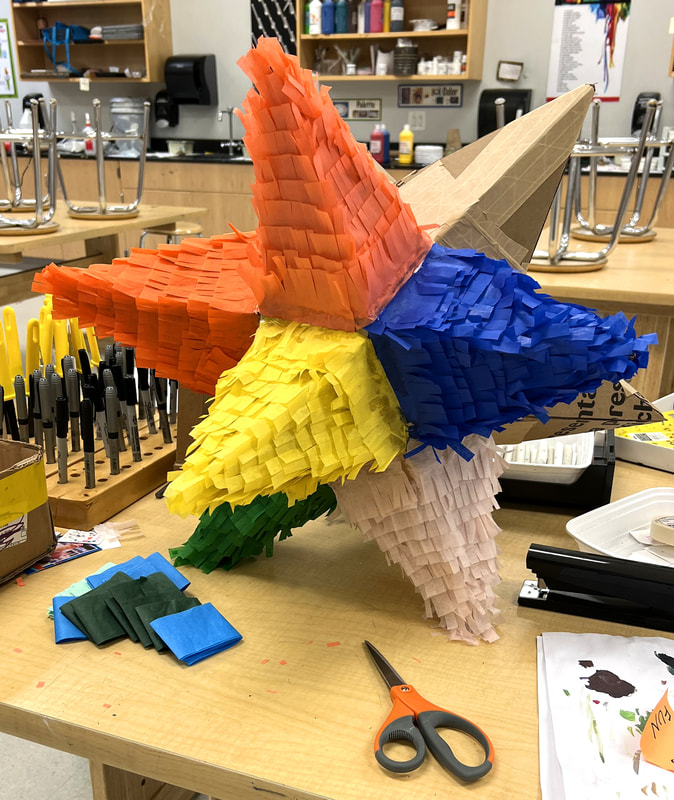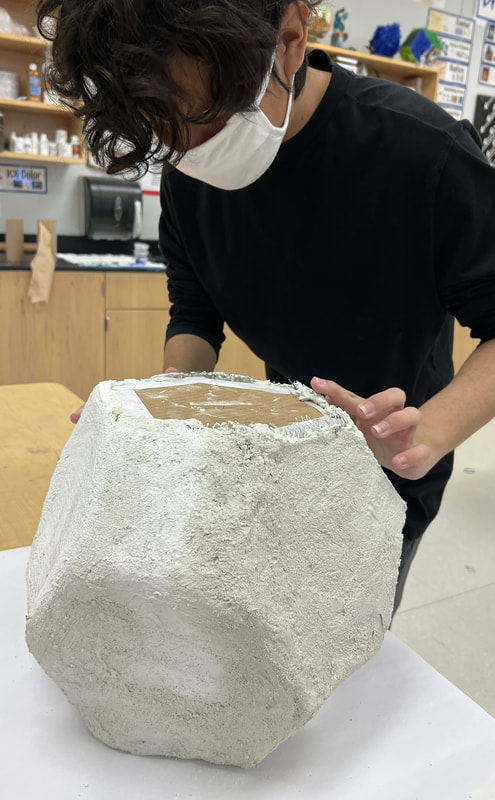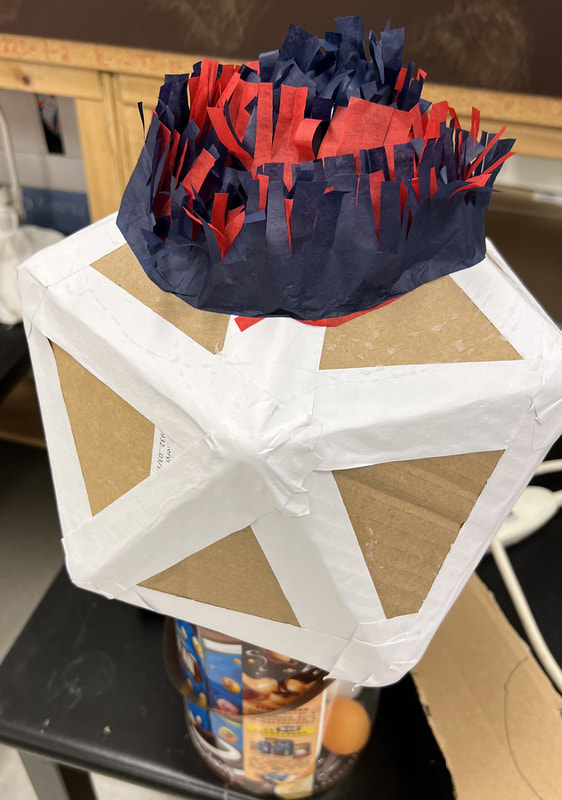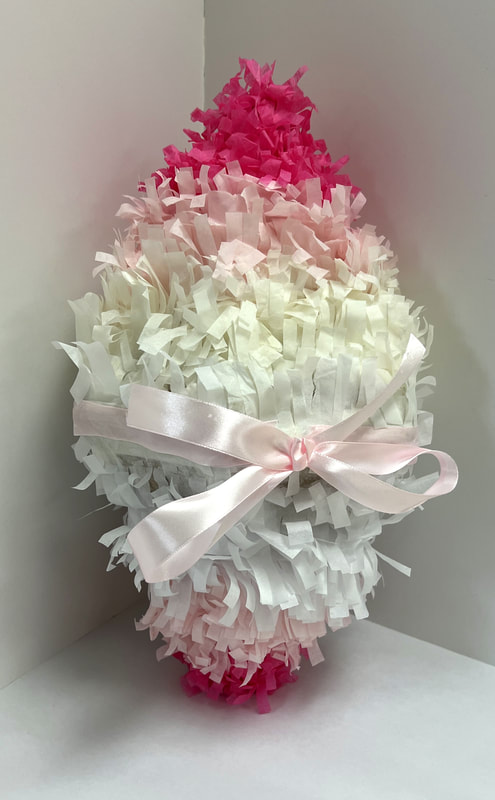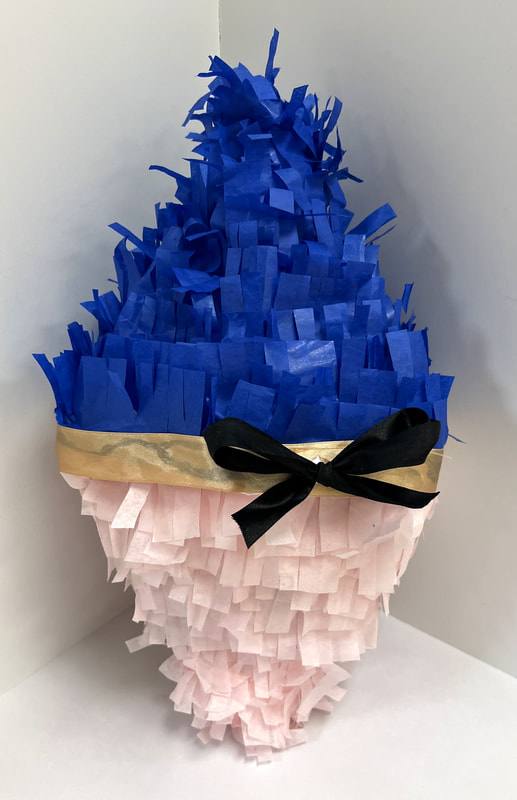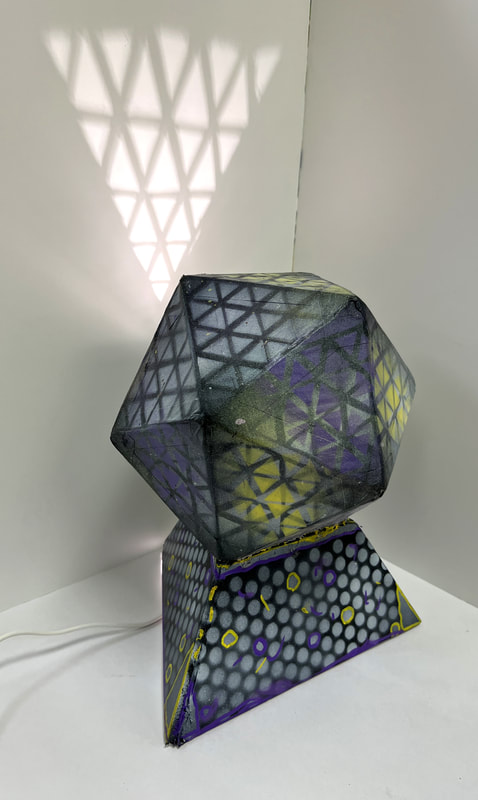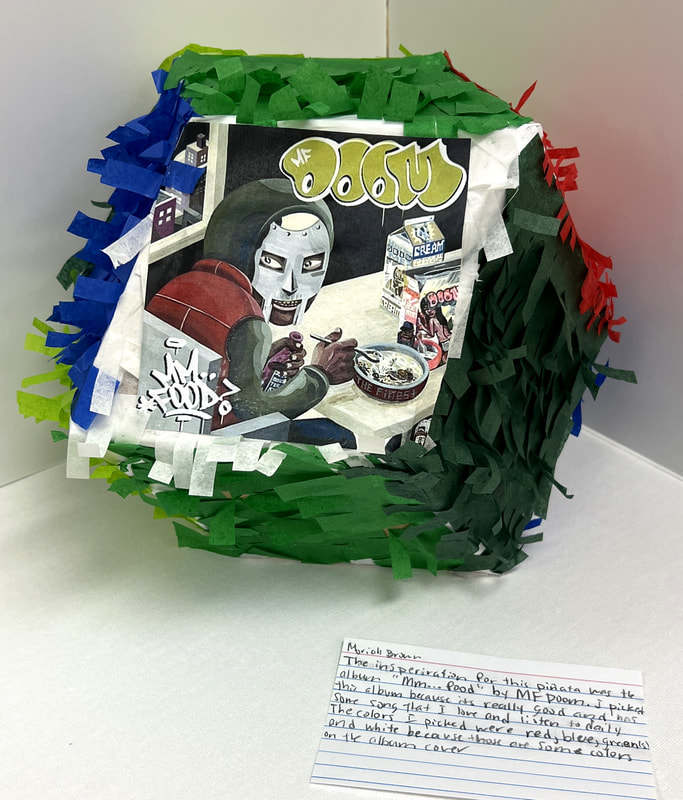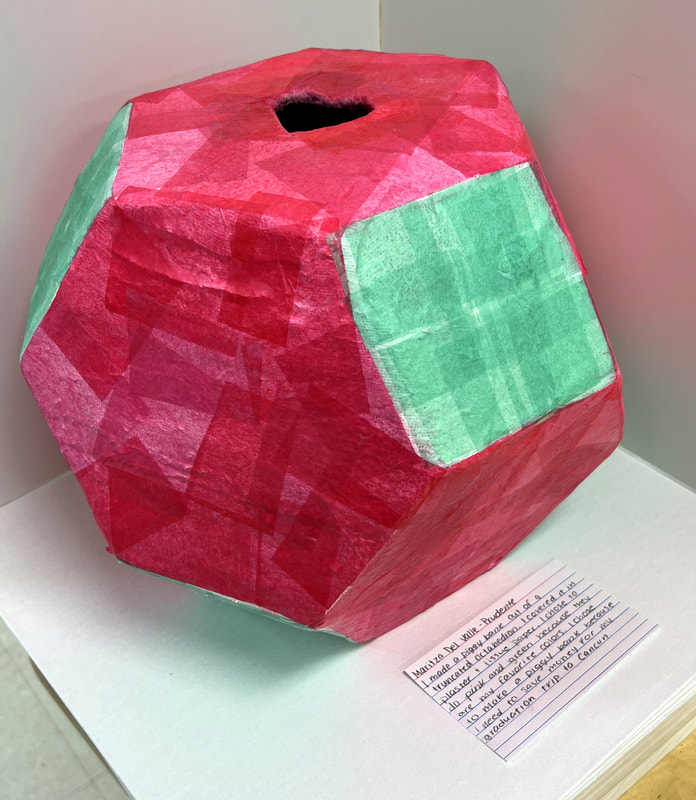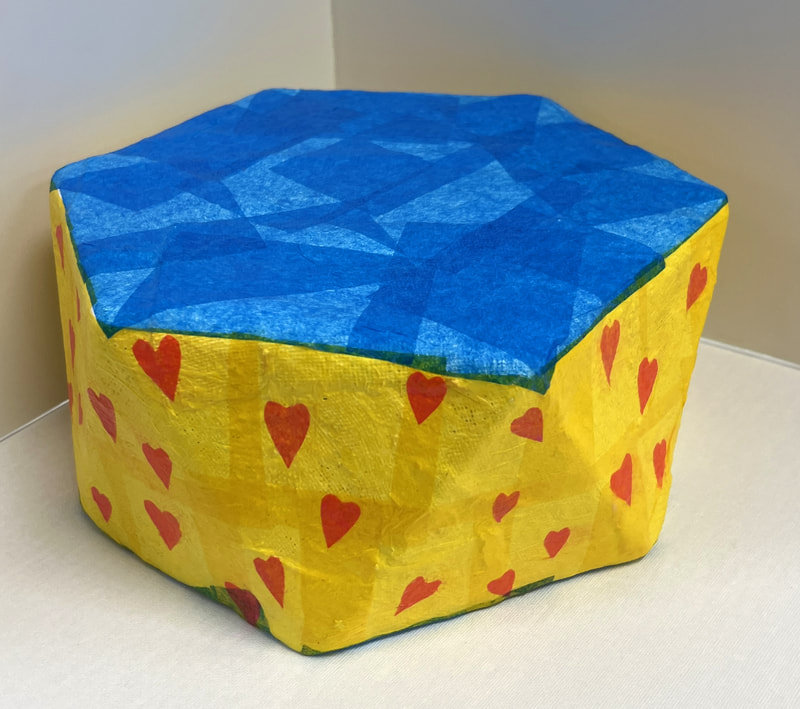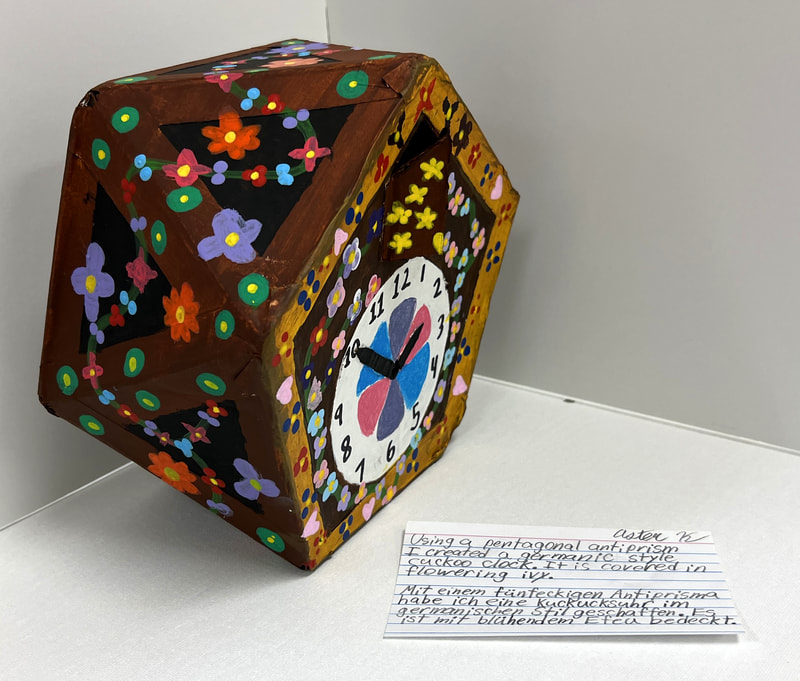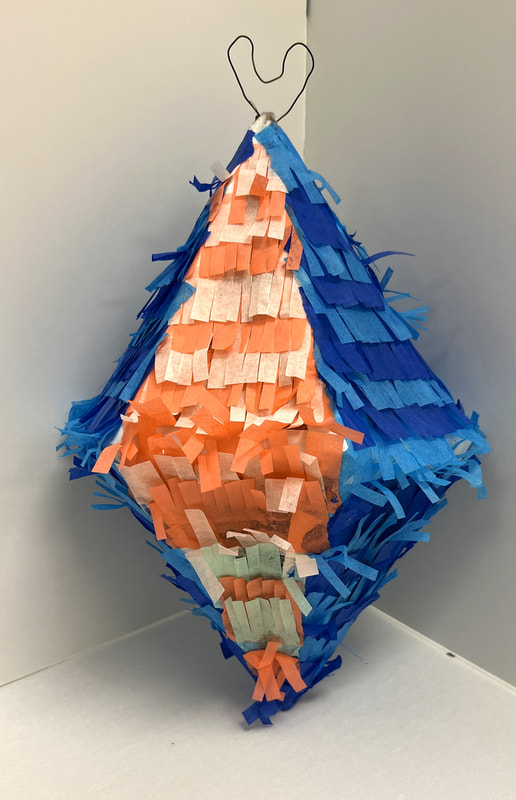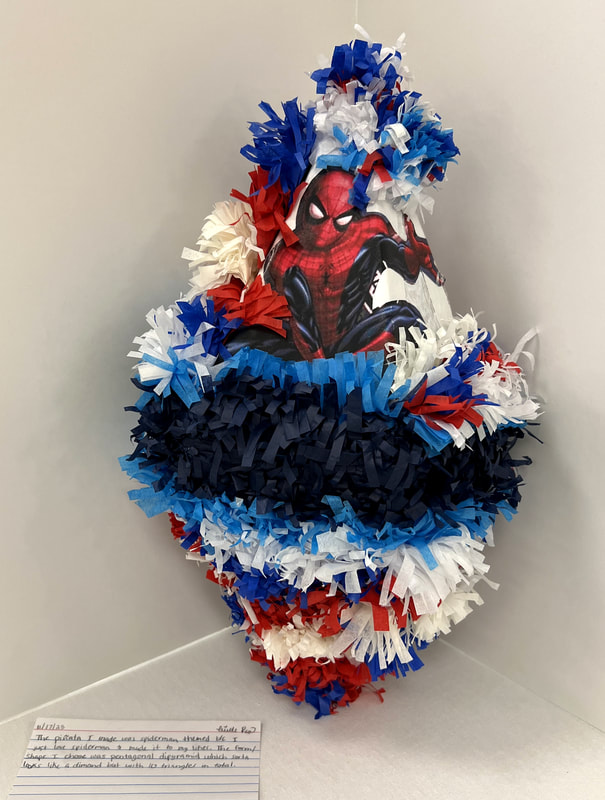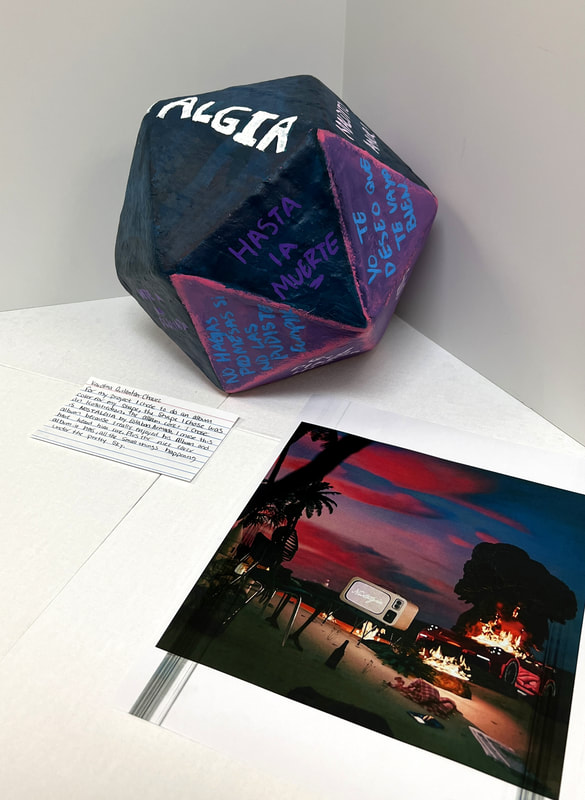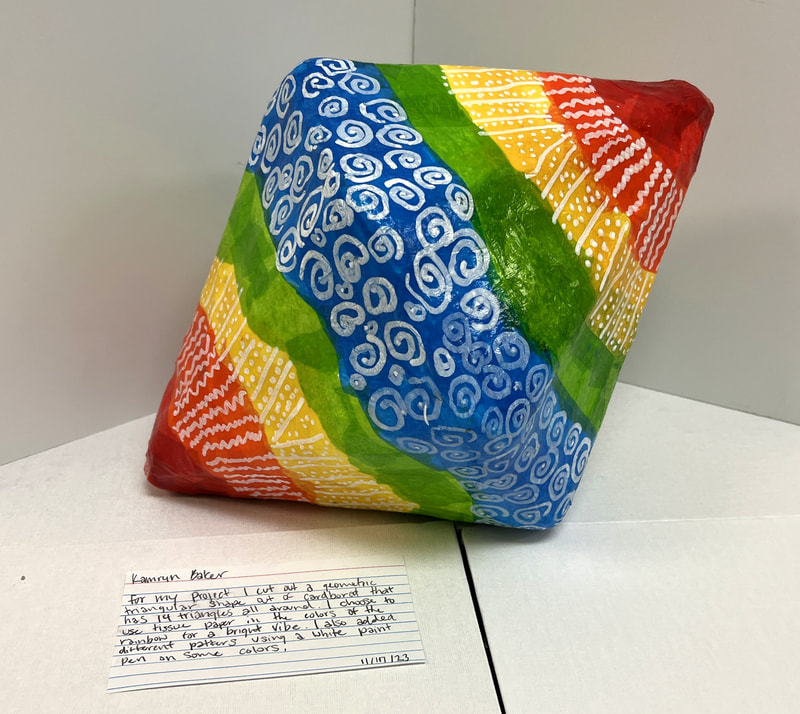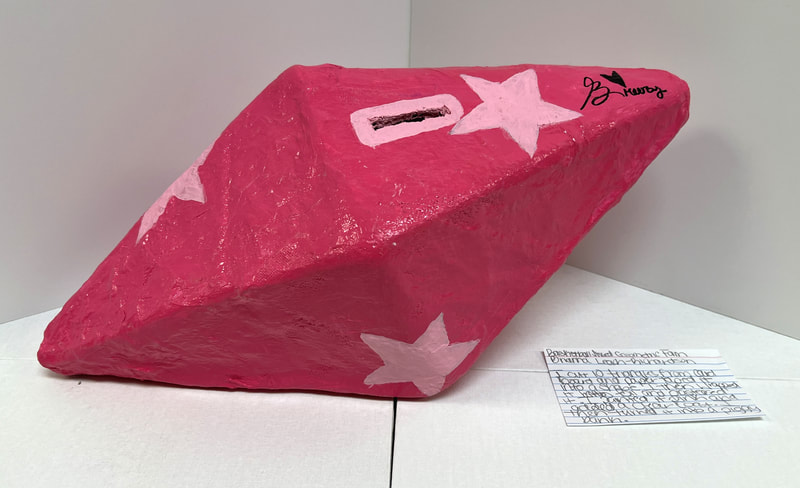Exploring form and scale in this geometric sculpture project. I like to explore sculpture with my students and whenever possible, to include some recycling. I had a large reserve of cardboard and had been wanting my students to explore...
Exploring form and scale in this geometric sculpture project.
I like to explore sculpture with my students and whenever possible, to include some recycling. I had a large reserve of cardboard and had been wanting my students to explore scale. It’s something they need to understand for their math classes and we touched on it with grid portraits and origami.
I used the book, "3-D Geometric Forms For Art" to print enough polyhedric forms that each student could have a different one. Their samples were on standard copy paper but I wanted their final forms to be about the size of a basketball. We learned that basketballs have a circumference of nearly 30 inches. (29.5 in.) I asked my students how would they convert their form to a larger size,? My goal was for them to figure out how many times larger they would need to make their form templates. I told them to not deal with fractions, but to be in the neighborhood of 30 to 36 inches. In most cases it meant that they had to multiply their measurements by 4 or 5 times.
Many figures use equilateral or isosceles triangles. A few used pentagons, hexagons and other shapes. For this I had to give students a tutorial on how to use a protractor and measure angles. Once a paper template was made, shapes could be cut from cardboard. I find Canary Cutters are great for safely cutting cardboard for children of all ages.
Though tape can be used to quickly put forms together, I had my students “make tape” from Elmer’s Glue and thicker paper. Knowing some might paint their form, I know plastic tapes can sometimes resist painted media. As students were completing their forms we had a discussion about what they would ultimately turn them into creating art objects. We did a little brainstorming and research and these were the ideas students wanted to explore:
PiñatasPlantersPiggy Banks3D AlbumLampClock
?Piñatas, by far, were a big hit, likely because we have a large Hispanic population in my school and we did this right after Halloween. Candy was still fresh in their minds. The next popular choice was decorating the form with colors and lyrics of a favorite music artist’s album. Several made piggy banks by covering their form with plaster and tissue mâché. One student turned theirs into a lamp, while another created a Cuckoo Clock. We had a lot of fun, and I think reinforcing the use of rulers and protractors was greatly appreciated by our math department.
I used the book, "3-D Geometric Forms For Art" to print enough polyhedric forms that each student could have a different one. Their samples were on standard copy paper but I wanted their final forms to be about the size of a basketball. We learned that basketballs have a circumference of nearly 30 inches. (29.5 in.) I asked my students how would they convert their form to a larger size,? My goal was for them to figure out how many times larger they would need to make their form templates. I told them to not deal with fractions, but to be in the neighborhood of 30 to 36 inches. In most cases it meant that they had to multiply their measurements by 4 or 5 times.
Many figures use equilateral or isosceles triangles. A few used pentagons, hexagons and other shapes. For this I had to give students a tutorial on how to use a protractor and measure angles. Once a paper template was made, shapes could be cut from cardboard. I find Canary Cutters are great for safely cutting cardboard for children of all ages.
Though tape can be used to quickly put forms together, I had my students “make tape” from Elmer’s Glue and thicker paper. Knowing some might paint their form, I know plastic tapes can sometimes resist painted media. As students were completing their forms we had a discussion about what they would ultimately turn them into creating art objects. We did a little brainstorming and research and these were the ideas students wanted to explore:
PiñatasPlantersPiggy Banks3D AlbumLampClock
?Piñatas, by far, were a big hit, likely because we have a large Hispanic population in my school and we did this right after Halloween. Candy was still fresh in their minds. The next popular choice was decorating the form with colors and lyrics of a favorite music artist’s album. Several made piggy banks by covering their form with plaster and tissue mâché. One student turned theirs into a lamp, while another created a Cuckoo Clock. We had a lot of fun, and I think reinforcing the use of rulers and protractors was greatly appreciated by our math department.



